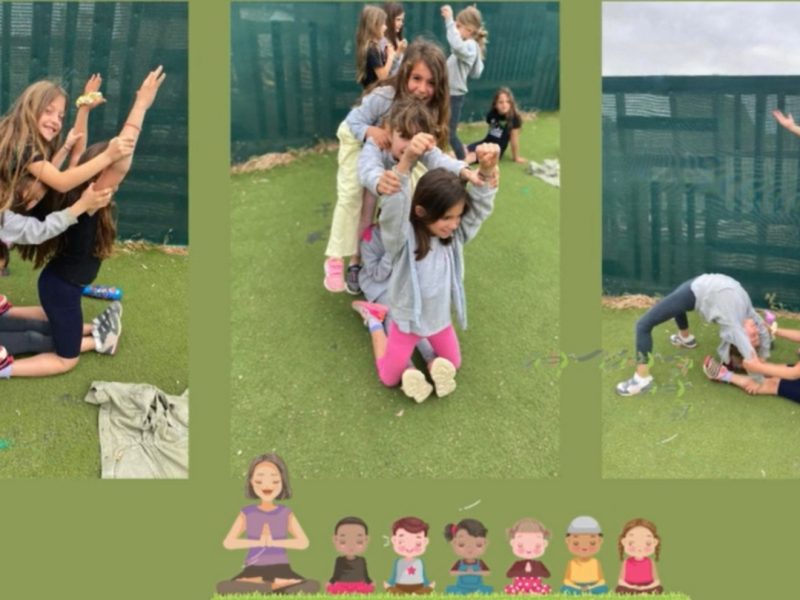

Yoga in DES Primary School
Yoga has become an increasingly popular activity in DES schools due to its numerous benefits for children’s physical and mental well-being. Integrating yoga into the school curriculum helps promote physical fitness, enhance concentration, reduce stress, and improve emotional regulation among young students. One particular approach to yoga in schools that has gained attention is using partner yoga poses, also known as yoga shapes.
Partner Yoga Poses (Yoga Shapes)
Partner yoga poses are exercises where two students work together to create specific shapes or perform synchronized movements. These activities are not only fun but also serve several educational and developmental purposes:
Partner yoga poses require students to work closely with peers, fostering a sense of teamwork and cooperation. Children must communicate effectively, synchronize their movements, and support each other to complete the poses successfully. This collaboration helps them understand the importance of working together towards a common goal, a valuable skill inside and outside the classroom.
Trust and Community Building
Engaging in partner yoga is more than just physical exercise; it’s a powerful tool for building trust and fostering a sense of community. Many poses involve balancing or leaning on one another, which requires trust and confidence in each other’s abilities. This trust-building exercise can enhance the sense of community within the class, making students feel more connected and supportive of one another.
Fun and Engagement
Partner yoga poses are not just exercises. They’re adventures in physical activity that children eagerly look forward to. The sheer joy and excitement of creating different shapes with a partner can transform yoga sessions into something truly engaging. This positive association with physical activity can inspire a lifelong habit of regular exercise in our young ones.
Physical and Emotional Benefits
Partner yoga is a holistic activity that benefits children both physically and emotionally. While engaging in partner yoga, children develop physical skills such as balance, strength, and flexibility. Additionally, these activities can have emotional benefits, including reduced anxiety and improved mood. The supportive environment of working with a partner can also help boost self-esteem and confidence.
Examples of Partner Yoga Poses
Conclusion
Partner yoga poses offer a unique blend of physical exercise and social-emotional learning when incorporated into primary school education. They teach children the importance of teamwork, trust, and collaboration in a fun and engaging way. This contributes to their physical health and fosters a positive and inclusive classroom environment, helping students build strong, supportive relationships with their peers. In conclusion, partner yoga poses are a valuable addition to the primary school curriculum, promoting the overall well-being of young students.